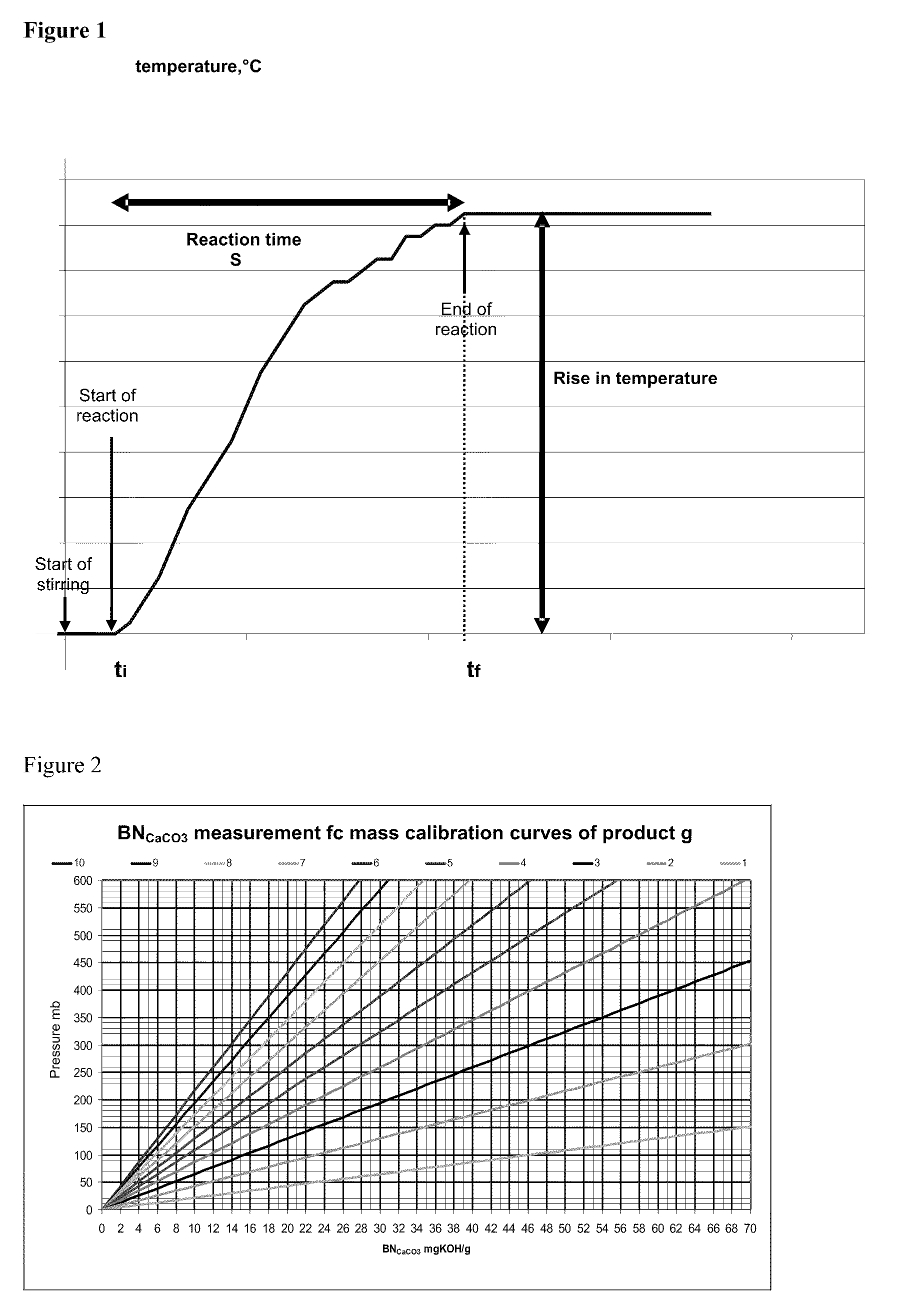Cylinder lubricant for a two-stroke marine engine
a technology for marine engines and cylinder lubricants, which is applied in the field of cylinder lubricants for two-stroke marine engines, can solve the problems of detergents that cannot be envisaged, detrimental to other properties of lubricants, and would not be realisti
- Summary
- Abstract
- Description
- Claims
- Application Information
AI Technical Summary
Problems solved by technology
Method used
Image
Examples
example 1
[0189]This example aims to describe the method making it possible to measure the contribution of the insoluble metallic salts present in the overbased detergents to the BN of the lubricating compositions containing said overbased detergents:
[0190]The total basicity measurement (referred to as BN or Base Number) of the finished lubricating oils or overbased detergents is carried out using the ASTM D2896 method. The BN is composed of two distinct forms:[0191]carbonate BN, provided by the overbasing of the detergent with metallic carbonates, generally calcium carbonate, hereafter referred to as “BNCaCO3”,[0192]so-called organic BN provided by the metallic soap of the detergent of an essentially phenate or salicylate type, or sulphonate.
[0193]The carbonate BN, hereafter referred to as “BNCaCO3” is measured on the finished oil or the overbased detergents alone, according to the following procedure. The latter is based on the principle of attacking the (calcium) carbonate overbasing of th...
example 2
[0220]This example aims to describe the enthalpy test making it possible to measure the neutralization efficiency of the lubricants vis-à-vis sulphuric acid.
[0221]The availability or accessibility of the basic sites included in a lubricant, in particular a cylinder lubricant for a two-stroke marine engine, vis-à-vis the acid molecules, can be quantified by a dynamic test for monitoring the speed or kinetics of neutralization.
Principle:
[0222]The acid-base neutralization reactions are generally exothermic and it is therefore possible to measure the release of heat obtained by reaction of sulphuric acid on the lubricants to be tested. This release is monitored by the evolution of temperature over time in a DEWAR type adiabatic reactor.
[0223]Based on these measurements, it is possible to calculate an index quantifying the efficiency of a lubricant according to the present invention compared with a lubricant used as a reference, and for an added quantity of acid representing a fixed numb...
example 3
[0246]this example describes by way of comparison the influence of the contribution of the BN provided by the metallic carbonate salts on the performances of the cylinder oils, namely their neutralization efficiency.
[0247]In this example several 70 BN cylinder oils A, B, C, are used, in which part of the BN is provided, as in the reference oil, by a concentrate of overbased detergents, and another part is provided by a mixture of fatty polyamines obtained from tallow, containing mainly palmitic, stearic and oleic acids. This amine mixture has a BN of 460 mg KOH / g. It is made up of compounds with the formula R[NH—(CH2)3]nNH2, where R represents the fatty chain of the palmitic, stearic or oleic acids, and n is an integer comprised between 0 and 3.
[0248]The reference is the 70 BN two-stroke marine engine cylinder oil referenced Href in the previous example.
[0249]Table 1 hereafter summarizes the characteristics of the reference and of the samples tested as well as the values of their ef...
PUM
 Login to View More
Login to View More Abstract
Description
Claims
Application Information
 Login to View More
Login to View More - R&D
- Intellectual Property
- Life Sciences
- Materials
- Tech Scout
- Unparalleled Data Quality
- Higher Quality Content
- 60% Fewer Hallucinations
Browse by: Latest US Patents, China's latest patents, Technical Efficacy Thesaurus, Application Domain, Technology Topic, Popular Technical Reports.
© 2025 PatSnap. All rights reserved.Legal|Privacy policy|Modern Slavery Act Transparency Statement|Sitemap|About US| Contact US: help@patsnap.com



